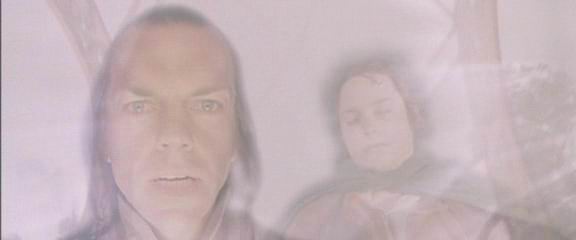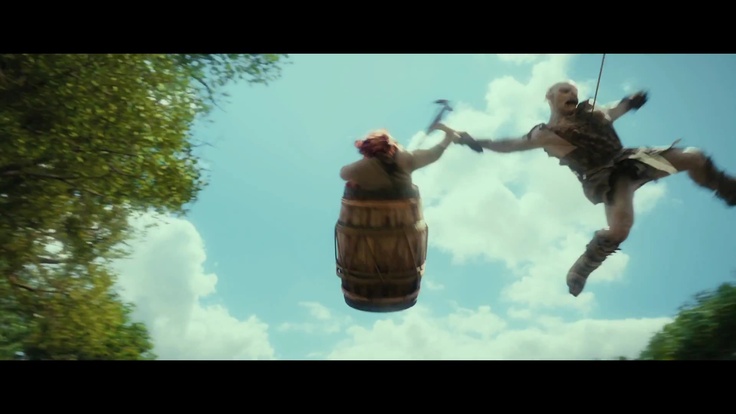As part two of the “huge” post concerning hobbits these films, I again would like to gently remind everyone that I enjoyed The Hobbit films and probably sound more abrasive towards them than I mean to. Am I likely being over-critical? Maybe, but this is my blog neener-neener.
Thank you.
Last time, I talked about the films’ soundtracks. While I could go on and on, I’d like to move on to the second item on my imaginary list of topics:
The camera-work (cinematography).
Peter Jackson alongside the various unit directors for all of the films in both trilogies did a fantastic job in each and every single film. The criticisms I bring to the table about their work is not to say that they have done poorly or that what I preferred is somehow “correct” or inherently “better”.
During my recent viewing of The Fellowship of the Ring, I noticed that a lot of close-up shots were used to highlight specific elements (e.g. the ring, facial expressions). Overall, I feel that this visual attention to detail is missing in the second trilogy. In the LotR films there was a focus on how actions were done and how people reacted to them. This wasn’t the case in The Hobbit, where it seemed like the reliance on group shots meant attention to detail in actions wasn’t very common.
One other thing I sorely missed in The Hobbit trilogy were the beautiful helicopter panorama shots. The lighting of the beacons of Gondor is a great example of these kinds of shots. New Zealand has some utterly stunning landscapes and Peter Jackson (and the other unit directors) used those to create some beautiful moments. Seeing the mountains and clouds as well as valleys and rivers really helped immerse audiences into the film.
I don’t really have much else to say about the cinematography, but after completing my viewing of the LotR trilogy, one HUGE thing came up:
The fight sequences.
The biggest problem I have with the fight sequences in The Hobbit is that there’s a distinct lack of violence. Yeah, there’s a lot of fighting, but a lot of people just get hit with swords, axes, and hammers with little visual consequence. In LotR, severed heads were flying, blood was everywhere, etc. The Hobbit feels like everyone’s fighting with blunt objects, yet not getting visibly wounded.
The bloodiest moment in the entire Hobbit trilogy is Azog’s arm getting cut off in the first film. Even then, we just see a spurt of blood before he grabs at his stump with his other hand, running off into the cave. Otherwise? The multiple stabbings and bludgeonings in the film feel a bit too “safe”. Sure, this might mean it’s a bit more “family friendly”, but I feel like it kind of isn’t.
I’m sorry, but if someone’s getting a sword swung at them, there’s going to be blood if it slices their head off. Axes cause a lot of damage and we didn’t really see any of it. I like to see the consequences of violence, not because I enjoy seeing it, but because it feels complete and accurate. The LotR trilogy never shied away from blood and other gruesome moments–something which made the violence more jarring and, in case of Legolas’s stunts, more badass. Seeing Boromir take multiple arrows, bleeding out while still fighting is epic. If he had been shot at without showing any sign of actual injury, his continued struggle to fight and protect Merry and Pippin wouldn’t be as emotionally effective.
I also found that The Hobbit‘s fight sequences looked a bit too choreographed. While all fight sequences in film and theatre are choreographed (for safety reasons as well as making them look good), The Hobbit felt a bit too artificial in that sense. LotR had fights that, while being planned out, played out like actual fights. There was EFFORT being exerted as the actors swung weapons to strike their enemies. Of course, Legolas always has the awesome sequences, but because the rest of the cast was executing more realistic moves, Legolas’s moments of badassery felt like a treat. The Hobbit felt full of gimmicky fighting and so, upon multiple viewings, the sequences that were super epic and fun to watch (e.g. Bombur in the barrel) lose their effectiveness. The excitement wears off.
 Finally, there’s one last thing that may not be something everyone would agree with, but that I really felt strongly during the third Hobbit movie that has transferred over to the other two films.
Finally, there’s one last thing that may not be something everyone would agree with, but that I really felt strongly during the third Hobbit movie that has transferred over to the other two films.
They feel like video games.
This isn’t due to the 48fps as some people speculated, but rather the overuse of CGI (in my opinion). The orcs, goblins, and uruk-hai in LotR were people wearing prosthetics and thus they looked very real. The complete overhaul of goblins for The Hobbit made them so different compared to the beautifully grotesque goblins in the Mines of Moria that they seemed cartoony by comparison. I realize that this is what they were probably going for, as The Hobbit was a book geared more towards children whereas The Lord of the Rings trilogy was not.
Still, the overuse of carefully executed stunts and fight sequences felt very much like “Oh, Bombur just did his special barrel ability.” The areas in the films felt almost like levels and it seemed as though every focus on a character fighting required them to do a “stunt” that wouldn’t feel out of place in the quickbar of an MMORPG. It got tiresome after a while.
I like when fights feel a bit unpolished because it feels realistic. I mean, fighting an orc isn’t something that happens to us outside of games, but I like when swordfights look convincingly like two people using skill and training to fight, rather than a series of moves with set reactions (not unlike set sparring drills in martial arts and other “fighting” sports). It sometimes felt like the enemies they fought were completely useless in battle, that the fights were pandering to the spectacle side of fighting as opposed to the actual aim of fighting in such a setting as an ambush or war: defending yourself (and companions) by incapacitating the enemy. This doesn’t have to mean flourishes of weapons and fancy twirls. This can mean just stabbing something–like Bilbo stabs the warg at the end of An Unexpected Journey.
All in all, I feel like LotR will continue to hold up in a way The Hobbit might not–at least for me. CGI technology will advance, making The Hobbit films look dated by comparison. Because LotR didn’t rely on it as heavily, it continues to look good (despite some moments feeling a bit silly–like Elrond superimposed on a glowy white background)

I hope that the level of detail these films go into regarding props, sets, and costumes remains common in fantasy movies, however. The Hobbit certainly didn’t disappoint in that regard and I applaud the teams of people who designed and created these important elements for all of their hard work.
This concludes my two-parter on the subject, though I’m sure I could ramble on into oblivion if I really wanted to. Let me know in the comments what you think! Feel free to disagree with me, as this is all my opinion.


One thought on “Trilogy vs. Trilogy: Why the Lord of the Rings trilogy feels timeless (Part Two)”